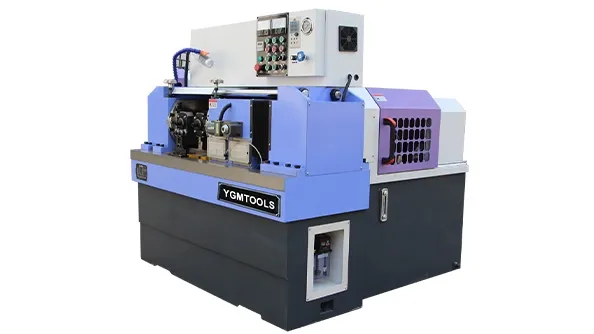
-
 Afrikaans
Afrikaans -
 Albanian
Albanian -
 Amharic
Amharic -
 Arabic
Arabic -
 Armenian
Armenian -
 Azerbaijani
Azerbaijani -
 Basque
Basque -
 Belarusian
Belarusian -
 Bengali
Bengali -
 Bosnian
Bosnian -
 Bulgarian
Bulgarian -
 Catalan
Catalan -
 Cebuano
Cebuano -
 Corsican
Corsican -
 Croatian
Croatian -
 Czech
Czech -
 Danish
Danish -
 Dutch
Dutch -
 English
English -
 Esperanto
Esperanto -
 Estonian
Estonian -
 Finnish
Finnish -
 French
French -
 Frisian
Frisian -
 Galician
Galician -
 Georgian
Georgian -
 German
German -
 Greek
Greek -
 Gujarati
Gujarati -
 Haitian Creole
Haitian Creole -
 hausa
hausa -
 hawaiian
hawaiian -
 Hebrew
Hebrew -
 Hindi
Hindi -
 Miao
Miao -
 Hungarian
Hungarian -
 Icelandic
Icelandic -
 igbo
igbo -
 Indonesian
Indonesian -
 irish
irish -
 Italian
Italian -
 Japanese
Japanese -
 Javanese
Javanese -
 Kannada
Kannada -
 kazakh
kazakh -
 Khmer
Khmer -
 Rwandese
Rwandese -
 Korean
Korean -
 Kurdish
Kurdish -
 Kyrgyz
Kyrgyz -
 Lao
Lao -
 Latin
Latin -
 Latvian
Latvian -
 Lithuanian
Lithuanian -
 Luxembourgish
Luxembourgish -
 Macedonian
Macedonian -
 Malgashi
Malgashi -
 Malay
Malay -
 Malayalam
Malayalam -
 Maltese
Maltese -
 Maori
Maori -
 Marathi
Marathi -
 Mongolian
Mongolian -
 Myanmar
Myanmar -
 Nepali
Nepali -
 Norwegian
Norwegian -
 Norwegian
Norwegian -
 Occitan
Occitan -
 Pashto
Pashto -
 Persian
Persian -
 Polish
Polish -
 Portuguese
Portuguese -
 Punjabi
Punjabi -
 Romanian
Romanian -
 Russian
Russian -
 Samoan
Samoan -
 Scottish Gaelic
Scottish Gaelic -
 Serbian
Serbian -
 Sesotho
Sesotho -
 Shona
Shona -
 Sindhi
Sindhi -
 Sinhala
Sinhala -
 Slovak
Slovak -
 Slovenian
Slovenian -
 Somali
Somali -
 Spanish
Spanish -
 Sundanese
Sundanese -
 Swahili
Swahili -
 Swedish
Swedish -
 Tagalog
Tagalog -
 Tajik
Tajik -
 Tamil
Tamil -
 Tatar
Tatar -
 Telugu
Telugu -
 Thai
Thai -
 Turkish
Turkish -
 Turkmen
Turkmen -
 Ukrainian
Ukrainian -
 Urdu
Urdu -
 Uighur
Uighur -
 Uzbek
Uzbek -
 Vietnamese
Vietnamese -
 Welsh
Welsh -
 Bantu
Bantu -
 Yiddish
Yiddish -
 Yoruba
Yoruba -
 Zulu
Zulu
thread roller machine
Understanding Thread Roller Machines Enhancing Precision in Fastener Production
In today’s fast-paced industrial landscape, precision and efficiency are paramount, especially in the production of fasteners. One of the pivotal machines that facilitate this is the thread roller machine. This innovative piece of machinery plays a crucial role in forming high-quality threads on fasteners, ensuring they meet stringent industry standards. Let’s delve into the function, advantages, and applications of thread roller machines.
Functionality of Thread Roller Machines
A thread roller machine is designed to produce threads on metal components through a cold forming process. Unlike traditional machining methods that cut material, thread rolling is a method that displaces material to create threads. This process is not only faster but also tends to be more economical in terms of material use. The basic working principle involves placing a cylindrical workpiece between two dies, which are then pressed together. As the workpiece rotates, the dies imprints the thread pattern onto it.
The machine can be adjusted to produce various thread sizes and profiles, making it a versatile option for manufacturers. Modern thread roller machines often come equipped with digital controls that enhance precision, allowing operators to program specific thread dimensions quickly. This adaptability is a significant advantage in industries that require custom fasteners and quick turnarounds.
Advantages of Using Thread Roller Machines
One of the most compelling advantages of thread roller machines is the superior strength of the threads produced. Since the process involves cold forming, the material’s grain structure remains uninterrupted, resulting in threads that are not only stronger but also more durable. This is especially critical in high-stress applications, such as automotive and aerospace industries, where the integrity of fasteners is paramount.
thread roller machine

Another benefit is the enhanced efficiency of the process. Thread rolling can produce threads at a faster rate than traditional cutting methods, significantly reducing production time. This increase in speed translates to lower labor costs and higher output, which is especially advantageous in mass production scenarios. Additionally, thread rolling generates less waste, as the process does not involve cutting away material. This not only helps in reducing material costs but also promotes a more environmentally friendly manufacturing approach.
Furthermore, the surface finish of rolled threads is generally superior to that of cut threads. The rolling process tends to create a smoother surface, which can translate to improved performance in many applications. For example, smoother threads can lead to better engagement and less wear over time, ensuring longer life for the fasteners used.
Applications of Thread Roller Machines
Thread roller machines are utilized across various industries where precision fasteners are required. In the automotive sector, they are used to manufacture bolts, nuts, and screws that must withstand harsh conditions and high torque. In the aerospace industry, where safety is critical, thread roller machines help produce fasteners that adhere to strict regulatory standards.
Additionally, the construction and electronics industries benefit from these machines by producing components necessary for assembly and infrastructure. With the rise of advanced manufacturing and automation, the role of thread roller machines continues to expand, exploring new materials and applications in innovative ways.
Conclusion
In conclusion, thread roller machines are an essential component of modern manufacturing, particularly in the fastener industry. Their ability to produce strong, precise, and cost-effective threads quickly is unmatched by traditional methods. As industries continue to evolve and demand more from their manufacturing processes, thread roller machines will undoubtedly remain at the forefront, driving advancements in quality and efficiency. Understanding the capabilities of these machines is crucial for manufacturers aiming to maintain a competitive edge in today’s market.
